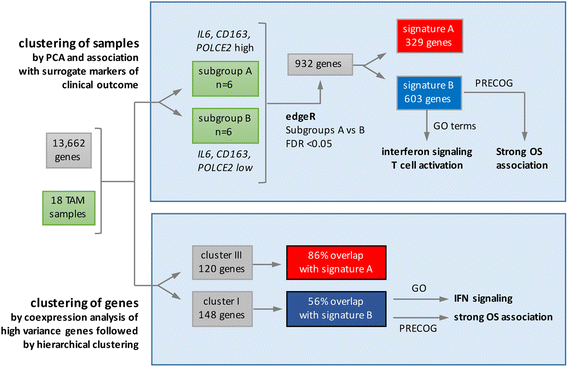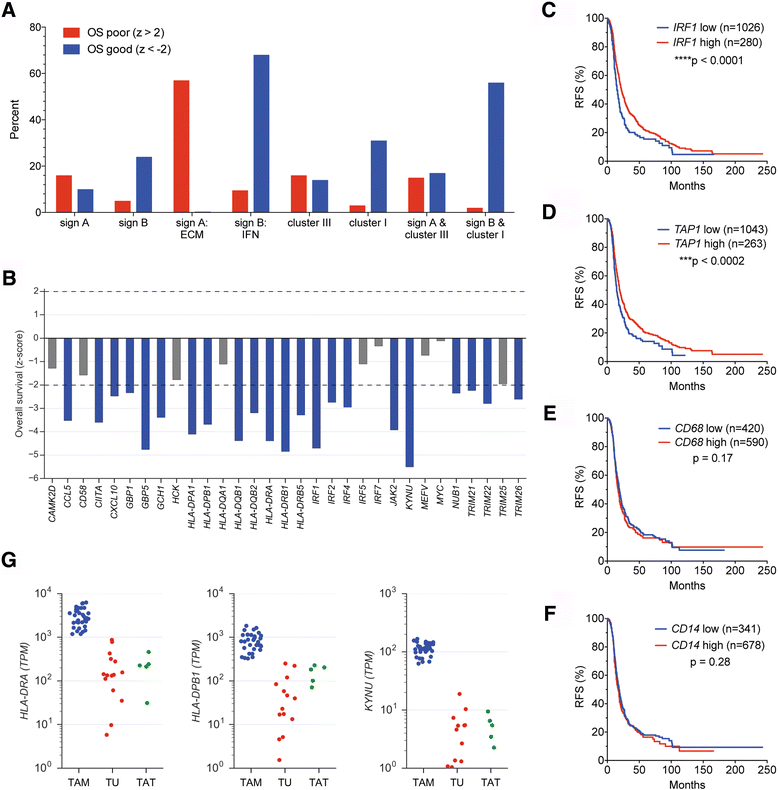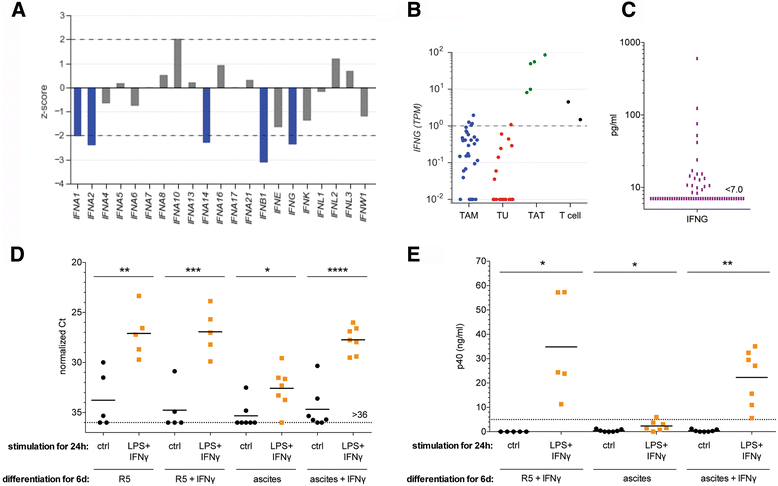Interferon signaling in ascites-associated macrophages is linked to a favorable clinical outcome in a subgroup of ovarian carcinoma patients
- PMID: 28327095
- PMCID: PMC5359932
- DOI: 10.1186/s12864-017-3630-9
Interferon signaling in ascites-associated macrophages is linked to a favorable clinical outcome in a subgroup of ovarian carcinoma patients
Abstract
Background: Although tumor-associated macrophages (TAMs) are essential for cancer progression, connections between different clinical outcomes and transcriptional networks have not been reported. We have addressed this issue by analyzing global expression patterns of TAMs isolated from the ascites of ovarian cancer patients.
Results: TAMs isolated from different ovarian cancer patients can be stratified by coexpression or principal component analysis into subgroups with specific biological features and associated with distinct clinical outcomes. A hallmark of subgroup A is a high expression of clinically unfavorable markers, including (i) high CD163 expression, a surface receptor characteristic of an anti-inflammatory activation state, (ii) increased PCOLCE2 expression, indicative of enhanced extracellular matrix organization, and (iii) elevated ascites levels of IL-6 and IL-10, linked to the aggressiveness of ovarian cancer and immune suppression. In contrast, subgroup B TAMs are characterized by the upregulation of genes linked to immune defense mechanisms and interferon (IFN) signaling. Intriguingly, analysis of published data for 1763 ovarian cancer patients revealed a strong association of this transcriptional signature with a longer overall survival. Consistent with these results, IFNγ was able to abrogate the suppressive effect of ovarian cancer ascites on the inducibility of IL12B expression and IL-12 secretion, a key determinant of a cytotoxic immune response.
Conclusions: The survival of ovarian cancer patients is linked to the presence of TAMs with a transcriptional signature that is characterized by a low expression of protumorigenic and immunosuppressive markers and an upregulation of genes linked to interferon signaling. The observed IFNγ-mediated restoration of the inducibility of IL-12 in the presence of ascites provides a possible explanation for the association of an interferon signaling-associated signature with a favorable clinical outcome.
Keywords: CD163; Interferon signaling; Interleukin 10; Interleukin 6; Ovarian cancer ascites; PCOLCE2; Tumor-associated macrophages.
Figures






References
Publication types
MeSH terms
Substances
LinkOut - more resources
Full Text Sources
Other Literature Sources
Medical
Research Materials

